What Are The Four Fundamental Forces Of Nature?

What are the four fundamental forces of nature?
In physics, the fundamental interactions, also known as fundamental forces, are the interactions that do not appear to be reducible to more basic interactions. There are four conventionally accepted fundamental interactions—gravitational, electromagnetic, strong, and weak. Each one is described mathematically as a field. The gravitational force is attributed to the curvature of spacetime, described by Einstein’s general theory of relativity. The other three, part of the Standard Model of particle physics, are described as discrete quantum fields, and their interactions are each carried by a quantum, an elementary particle.

Gravity, or gravitation, is a natural phenomenon by which all things with mass are brought toward (or gravitate toward) one another, including planets, stars and galaxies, and other physical objects. Since energy and mass are equivalent, all forms of energy (including light) cause gravitation and are under the influence of it. On Earth, gravity gives weight to physical objects, and causes the ocean tides. The gravitational attraction of the original gaseous matter present in the Universe caused it to begin coalescing, forming stars – and for the stars to group together into galaxies – so gravity is responsible for many of the large scale structures in the Universe. Gravity has an infinite range, although its effects become increasingly weaker on farther objects.

Electromagnetism is a branch of physics involving the study of the electromagnetic force, a type of physical interaction that occurs between electrically charged particles.
Electromagnetic phenomena are defined in terms of the electromagnetic force, sometimes called the Lorentz force, which includes both electricity and magnetism as different manifestations of the same phenomenon.
Ordinary matter takes its form as a result of intermolecular forces between individual atoms and molecules in matter, and is a manifestation of the electromagnetic force. Electrons are bound by the electromagnetic force to atomic nuclei, and their orbital shapes and their influence on nearby atoms with their electrons is described by quantum mechanics. The electromagnetic force governs the processes involved in chemistry, which arise from interactions between the electrons of neighboring atoms.

The strong interaction is the mechanism responsible for the strong nuclear force (also called the strong force or nuclear strong force). At the range of 10−15 m (1 femtometer), the strong force is approximately 137 times as strong as electromagnetism, a million times as strong as the weak interaction and 1038 times as strong as gravitation. The strong nuclear force holds most ordinary matter together because it confines quarks into hadron particles such as the proton and neutron. In addition, the strong force binds neutrons and protons to create atomic nuclei. Most of the mass of a common proton or neutron is the result of the strong force field energy; the individual quarks provide only about 1% of the mass of a proton.

The weak interaction (the weak force or weak nuclear force) is the mechanism of interaction between sub-atomic particles that causes radioactive decay and thus plays an essential role in nuclear fission.
The weak force, or weak interaction, is stronger than gravity, but it is only effective at very short distances. It acts on the subatomic level and plays a crucial role in powering stars and creating elements.
Sources: Wikipedia ( x | x | x | x | x | x ) images: hyperphysics.phy-astr.gsu.edu
More Posts from Real-scientician-blog and Others

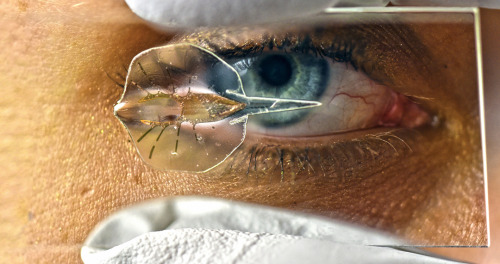

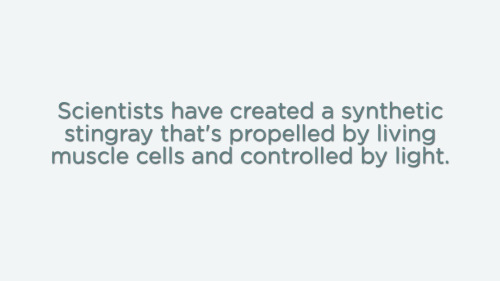
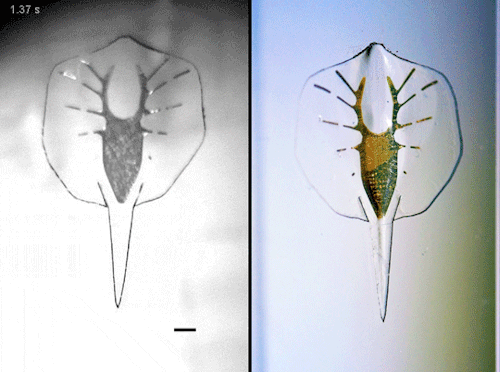
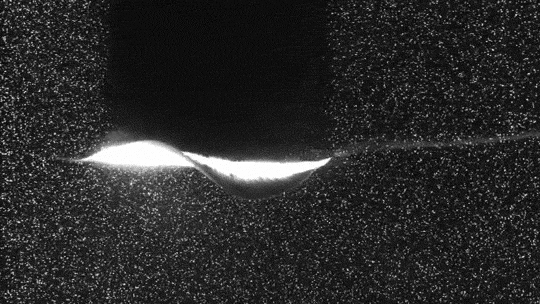

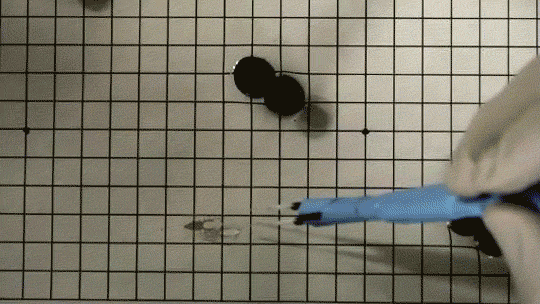
I’ll say it again: Scientists have created a synthetic stingray that’s propelled by living muscle cells and controlled by light.
!
But the ultimate goal isn’t a cyborg sea monster - it’s a human heart.
“I want to build an artificial heart, but you’re not going to go from zero to a whole heart overnight,” says Kit Parker, a bioengineer and physicist at Harvard University’s Wyss Institute. “This is a training exercise.”
Full, fascinating story here.

How many of you know about this device ?
#pediatrics #child #xray #radiology #piggostat #radiologist #usmle #usmlestep1 #usmlestep2 #doctor #doctordconline #nhs #nurse #nursing #hospital #hospitallife #patient #mbbs #md #medicine #amc #plab @doctordconline
ok kids repeat after me
vinegar and bleach makes chlorine gas, which is highly toxic
ammonia and bleach makes chloramine, which is highly toxic
rubbing alcohol and bleach makes chloroform, which is highly toxic
hydrogen peroxide and vinegar makes peracetic/peroxyacetic acid, which can be highly corrosive
be careful about your cleaning products and dont get yourself injured or potentially killed ok
kinda cool to think how someone somewhere is having the best day of their life today. someone’s hearing “i love you” for the first time today. someone’s gonna meet the love of their life today. someone’s gonna get the job of their dreams today. it’s someone’s best day today. and guess what binch? tomorrow it could be ur best day so keep going
sure he’s well versed in leftist theory but does he do the dishes

Yes I’m reposting… but this is my absolute favorite post. Great way to start to my intense day, full of cramming and memorizing pages and pages of lab procedures.
im scared that tomorrow imma fuck around and look at the sun on accident

if you’re going back to school or you’re already in school…good luck! Study hard but remember to get enough hours of sleep ❤
5 things you didn’t know about...bone-healing nanofibres

Credit: Riitta-Leena Inki
1. They are thin-film and fibrous biomaterials with similar structures and regeneration rates to that of bone.
2. They were developed by Jani Holopainen, a doctoral researcher in the Department of Chemistry at the University of Helsinki, Finland.
3. The hydroxyapatite fibres are produced on a needleless, twisted wire electrospinning apparatus.
4. They could be used in bone implants and as scaffolding for bone regeneration. Cellular tests have been made already, but medical application is a way off.
5. The nanofibres would be used as a scaffold on the bone fracture or fault, activating the bone cells to reproduce. As the new cells are generated the nanofibres disintegrate, meaning there would be no need for further surgery to remove the nanofibre scaffold.
Find out more about this on page 21 of the upcoming March issue of Materials World.

Spider webs are already strong enough to restrain small insects unlucky enough to fly into them, and soon, they may be capable of carrying the weight of a person.
In a new study published in 2D Materials, Nicola Pugno at the University of Trento in Italy and his team detail how they cranked arachnids’ already impressive metabolic process up to 11 by adding graphene and carbon nanotubes to a spider’s drinking water.
Afterward, the spider produced silk as it normally would, but the silk was five times stronger, putting it on par with the likes of pure carbon fibers and Kevlar — the strongest materials on Earth.
Continue Reading.
-
 misan-thropist reblogged this · 2 years ago
misan-thropist reblogged this · 2 years ago -
 thebeetlegirlblog reblogged this · 2 years ago
thebeetlegirlblog reblogged this · 2 years ago -
 tattersby reblogged this · 3 years ago
tattersby reblogged this · 3 years ago -
 roriksavant reblogged this · 3 years ago
roriksavant reblogged this · 3 years ago -
 khyrberos reblogged this · 3 years ago
khyrberos reblogged this · 3 years ago -
 khyrberos liked this · 3 years ago
khyrberos liked this · 3 years ago -
 one-dumb-enby reblogged this · 3 years ago
one-dumb-enby reblogged this · 3 years ago -
 revontulivuori liked this · 3 years ago
revontulivuori liked this · 3 years ago -
 space-up-my-sleeve reblogged this · 3 years ago
space-up-my-sleeve reblogged this · 3 years ago -
 elmonstro liked this · 3 years ago
elmonstro liked this · 3 years ago -
 pada29 reblogged this · 3 years ago
pada29 reblogged this · 3 years ago -
 pada29 reblogged this · 3 years ago
pada29 reblogged this · 3 years ago -
 seleniangnosis reblogged this · 3 years ago
seleniangnosis reblogged this · 3 years ago -
 lidisoka liked this · 3 years ago
lidisoka liked this · 3 years ago -
 spooooooosh liked this · 3 years ago
spooooooosh liked this · 3 years ago -
 yaadgaar liked this · 3 years ago
yaadgaar liked this · 3 years ago -
 cassava-leaves liked this · 3 years ago
cassava-leaves liked this · 3 years ago -
 rabs654 liked this · 3 years ago
rabs654 liked this · 3 years ago -
 mooneyezstargazer reblogged this · 3 years ago
mooneyezstargazer reblogged this · 3 years ago -
 diabetesnscoliosis reblogged this · 3 years ago
diabetesnscoliosis reblogged this · 3 years ago -
 diabetesnscoliosis liked this · 3 years ago
diabetesnscoliosis liked this · 3 years ago -
 asteriis liked this · 3 years ago
asteriis liked this · 3 years ago -
 saint-batrick liked this · 3 years ago
saint-batrick liked this · 3 years ago -
 avon-vila reblogged this · 3 years ago
avon-vila reblogged this · 3 years ago -
 avon-vila liked this · 3 years ago
avon-vila liked this · 3 years ago -
 thesolitarycat liked this · 3 years ago
thesolitarycat liked this · 3 years ago -
 dicks-world liked this · 3 years ago
dicks-world liked this · 3 years ago -
 praisealmightygod liked this · 3 years ago
praisealmightygod liked this · 3 years ago -
 radiatinglove liked this · 3 years ago
radiatinglove liked this · 3 years ago -
 handsxofxstone reblogged this · 3 years ago
handsxofxstone reblogged this · 3 years ago -
 qoixiop reblogged this · 3 years ago
qoixiop reblogged this · 3 years ago -
 insolito-2002 liked this · 3 years ago
insolito-2002 liked this · 3 years ago -
 afretful-future-traveler liked this · 3 years ago
afretful-future-traveler liked this · 3 years ago -
 sugar-shop liked this · 3 years ago
sugar-shop liked this · 3 years ago -
 all-the-luxury liked this · 3 years ago
all-the-luxury liked this · 3 years ago -
 nicole-diver liked this · 3 years ago
nicole-diver liked this · 3 years ago -
 twitchywitchycoraline reblogged this · 3 years ago
twitchywitchycoraline reblogged this · 3 years ago -
 spinkieden liked this · 3 years ago
spinkieden liked this · 3 years ago -
 gaysheep liked this · 3 years ago
gaysheep liked this · 3 years ago -
 brightmane57 reblogged this · 3 years ago
brightmane57 reblogged this · 3 years ago -
 ehspereep liked this · 3 years ago
ehspereep liked this · 3 years ago